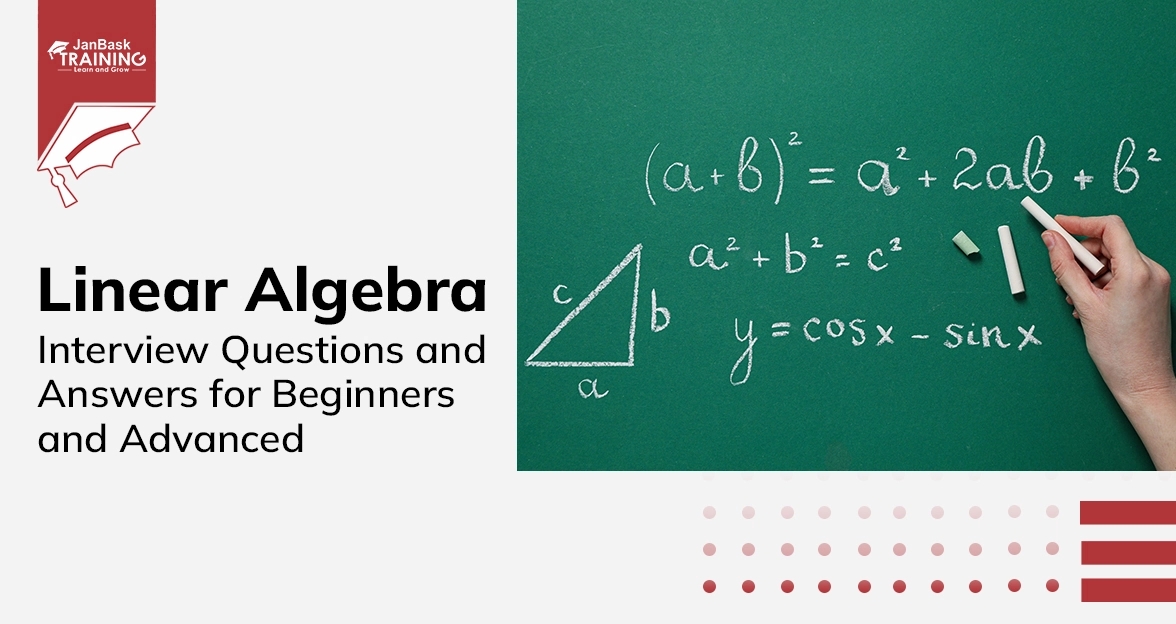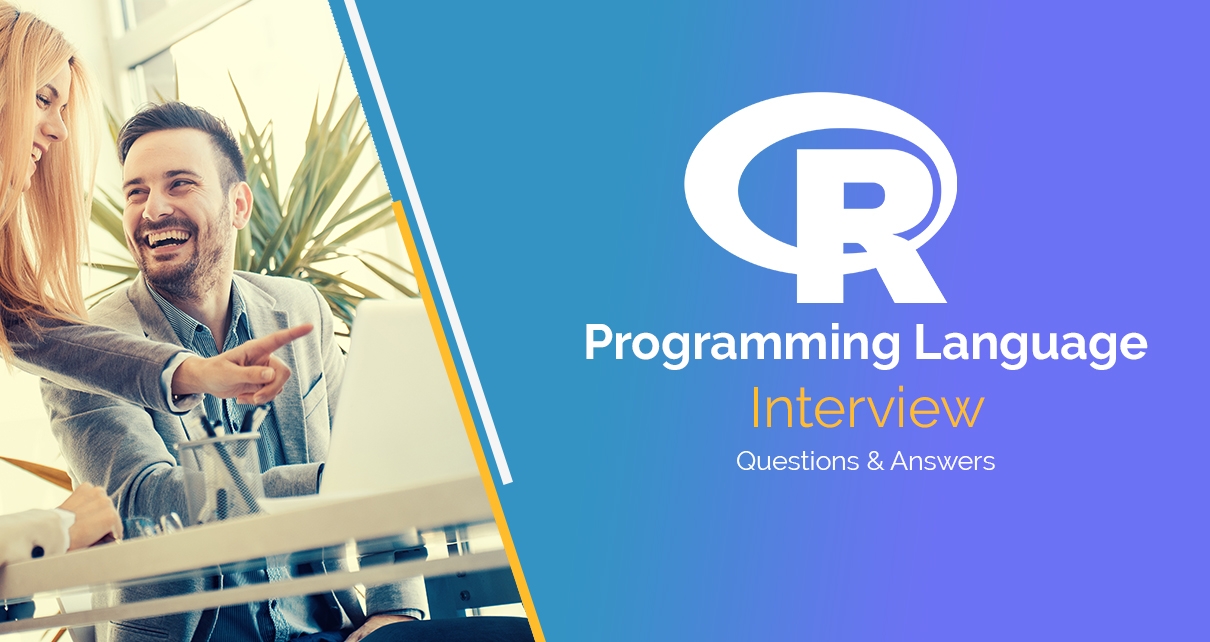 Grab Deal : Upto 30% off on live classes + 2 free self-paced courses - SCHEDULE CALL
Grab Deal : Upto 30% off on live classes + 2 free self-paced courses - SCHEDULE CALL

 Grab Deal : Upto 30% off on live classes + 2 free self-paced courses - SCHEDULE CALL
Grab Deal : Upto 30% off on live classes + 2 free self-paced courses - SCHEDULE CALL

Machine Learning is an essential aspect of data science. Its understanding is crucial for any data scientist to achieve a more prosperous career. In this blog, we will navigate through data science with Python interview questions, focusing on Machine Learning with Scikit-Learn. We bring you some of the most trending questions covering the fundamental and advanced concepts, algorithms, and techniques essential for both freshers and expert data scientists
Ans: Scikit-learn is a Python module integrating many machine learning algorithms. It is important in machine learning as it provides an easy-to-use interface for regression, classification, clustering, and dimensionality reduction algorithms. Scikit-learn allows you to implement these algorithms easily, reducing the complexity of training model evaluation and tuning. Many preprocessing data options, feature selection, and model validation capabilities make this choice ideal for novices or experts, making it possible to create and utilize machine learning in different application areas.
Ans: The two broad categories are supervised and unsupervised learning.
1. Supervised learning: It refers to methods where the training set contains attributes that need to be predicted, known as the target. We can use these values to instruct the model to provide predictions when confronted with values in a test set.
In classification, the data within the training set are categorized into two or more classes. With labeled data, we can train the system to recognize characteristics that define each class. When encountering a value to the system, it will evaluate its class based on its specific traits.
Regression comes into play when we need to predict a variable. To grasp this concept easily, imagine finding a line that describes the trend of a series of points displayed on a scatterplot.
2. Unsupervised learning: It involves methods where the training set consists of input values (x) without corresponding target values.
Ans: Supervised learning is a type of machine learning that involves learning patterns between features from a training set containing known results. This approach trains the algorithm on a labeled dataset, where each data point is associated with a target variable. The goal is to learn a mapping function to predict the target variable for new, unseen data points.
In scikit-learn, supervised learning is implemented using the fit(x, y) function. Here, x represents the observed features or independent variables, and y represents the target or dependent variables. The fit function trains the model on the training set, which involves adjusting the model parameters to minimize the difference between the predicted and actual target values. Once the model has been trained, it can predict new data points.
Ans: Machine learning uses different techniques to analyze and make predictions on data, among which are classification and regression. In general terms, classification is the division of a dataset into categories or classes based on specific attributes. This is a type of supervised learning where a model is built using labeled examples to predict the classes of unseen instances. For instance, it assigns each point in a set to distinct groups.
Conversely, regression is a machine learning technique that predicts continuous variables from one or more input variables. Similarly, this is another kind of supervised learning where a model is trained using historical data to forecast values corresponding to other parameters. As such, its output always lies between values.
Ans: The Iris Dataset is a well-known example in the field of machine learning. It is often used for classification tasks, where the goal is to categorize iris plants into three different species based on measurements of their sepals and petals. This problem involves training a machine learning model on a labeled dataset containing examples of iris plants and their corresponding species labels. The model then uses this training data to learn patterns and relationships between the input features (i.e., sepal and petal measurements) and the output labels (i.e., iris species). Once the model is trained, it can be used to make predictions on new, unseen data, allowing it to accurately classify iris plants into their respective species. The Iris Dataset is a classic example of how machine learning can solve real-world problems by learning from data.
Ans: In machine learning, several algorithms are commonly used for solving classification and regression problems. One such algorithm is K-Nearest Neighbors, which is used for classification tasks. This algorithm works by identifying the K nearest data points to a given input and classifying the input based on the majority class of those K neighbors. Another commonly used algorithm is Linear Regression, used for regression tasks. This algorithm works by fitting a linear equation to the training data and using it to predict new data. Both algorithms are fundamental in learning patterns and making predictions based on the training data.
Ans: Scikit-learn is a popular machine-learning library in Python that provides many tools for building and evaluating machine-learning models. One of the key features of sci-kit-learn is its support for cross-validation, a technique used to assess the performance of a machine-learning model on unseen data.
Cross-validation involves splitting the dataset into training and testing sets, where the training set is used to train the model, and the testing set is used to evaluate its performance. This process helps avoid overfitting, a common problem in machine learning where the model performs well on the training data but poorly on the testing data.
Scikit-learn provides several functions for performing cross-validation, including K-fold cross-validation, stratified K-fold cross-validation, and leave-one-out cross-validation. These functions can be used to split the dataset into multiple folds, where each fold is used as a testing set while the remaining folds are used as a training set.
Ans: The feature selection process is of utmost importance in machine learning as it involves selecting the most relevant features for training the model. This process helps improve the model's performance by reducing overfitting and improving accuracy. Overfitting occurs when the model is trained on fewer features, including irrelevant ones, which can lead to poor performance on new data. By selecting only the most important features, the model can better generalize to new data and make more accurate predictions. Therefore, feature selection is a critical step in the machine-learning pipeline that can significantly impact the model's performance.
Ans: Scikit-learn also supports unsupervised learning, which involves working with unlabeled data to identify patterns or structures without a specific target variable. Its algorithms include clustering, dimensionality reduction like Principal Component Analysis (PCA), and anomaly detection. Therefore, these algorithms do not have specific target values and try to find patterns, relationships, or anomalies in a given dataset. scikit-learn's unsupervised learning can be used to gain insights about various applications such as anomaly detection in cybersecurity or customer segmentation based on complex datasets.
Ans: Data preprocessing in sci-kit-learn is an important step in preparing raw data sets for machine learning algorithms in sci-kit-learn. It consists of several activities that enhance the quality of data and its compatibility. Normalization is one technique that ensures feature scaling is uniform while encoding categorical variables, which translates non-numeric values into numeric ones that the computer can then understand. Missing values are usually handled through imputation or removal to maintain the integrity of the data set. Additionally, preprocessing involves feature extraction, dimensionality reduction, and splitting datasets into training and testing subs
Ans: Machine learning splits data into training and testing sets to evaluate how well a model generalizes to new data. Overfitting occurs when a model is too complex and fits the training data too closely. Techniques such as regularization and cross-validation are used to avoid overfitting. This ensures that robust models perform well on new, unseen data.
Ans: When building a machine learning model, it is important to clearly understand how well it will perform on new, unseen data. To achieve this, the data is typically split into two sets: the training set and the testing set. The training set is used to train the model, while the testing set is used to evaluate its performance. This separation is vital to assess how well the model generalizes to new, unseen data. By using a testing set that the model has not seen before, we can get a more accurate measure of its performance and ensure that it is balanced with the training data. This approach helps ensure the model is robust and can be used effectively in real-world scenarios.
Ans: Scikit-learn is a powerful machine-learning library designed to handle large datasets easily. It comes equipped with various efficient tools and algorithms optimized explicitly for performance on large data sets. These tools and algorithms are designed to minimize the computational overhead and memory usage, allowing you to work with large datasets without any performance issues. Additionally, scikit-learn provides a range of features that enable you to preprocess and transform your data, making it easier to work with and analyze. Scikit-learn is an excellent choice for anyone working with large datasets in a machine-learning context.
Ans: Scikit-learn is a powerful and widely used machine-learning library that offers many tools and algorithms for solving diverse problems. It can be used for classification, regression, clustering, and dimensionality reduction tasks, making it a versatile tool for various applications in different domains. With its user-friendly interface and extensive documentation, scikit-learn is popular among data scientists and machine learning practitioners. Its algorithms are designed to handle large datasets efficiently and provide tools for data preprocessing, feature selection, and model evaluation. Scikit-learn is a reliable and robust library that can help you build accurate and efficient machine-learning models for your specific needs.
Ans: Scikit-learn is a popular machine-learning library that provides many tools for hyperparameter tuning and model selection. These tools help data scientists and machine learning practitioners find the optimal model parameters and improve model performance. One such tool is grid search, which allows users to specify a range of hyperparameters and automatically search for the best combination of values. Another tool is cross-validation, which helps evaluate a model's performance by splitting the data into multiple subsets and training the model on each subset. Using these tools, data scientists can fine-tune their models and achieve better accuracy and performance on machine-learning tasks.
Data Science Training - Using R and Python

Whether you are a pro data scientist or just getting started, getting your basics right regarding Python, machine learning, and data science is necessary. Its array of tools and algorithms catalyzes data scientists and enthusiasts to master the intricate art of extracting insights from data.
If you are looking to master Data Science, embarking on a transformative learning journey with JanBask may be just the catalyst. We offer a comprehensive Online Data Science Certification Course that will equip you with The practical skills and theoretical understanding to thrive in this dynamic field. Embrace the opportunity to unleash your potential and sharpen your expertise in data-driven decision-making. Enroll today and let your curiosity guide your rise to success.

Statistics Interview Question and Answers


Data Warehouse Interview Question And Answers in 2024

R Programming Language Interview Questions & Answers

Cyber Security

QA

Salesforce

Business Analyst

MS SQL Server

Data Science

DevOps

Hadoop

Python

Artificial Intelligence

Machine Learning

Tableau
Download Syllabus
Get Complete Course Syllabus
Enroll For Demo Class
It will take less than a minute
Tutorials
Interviews
You must be logged in to post a comment